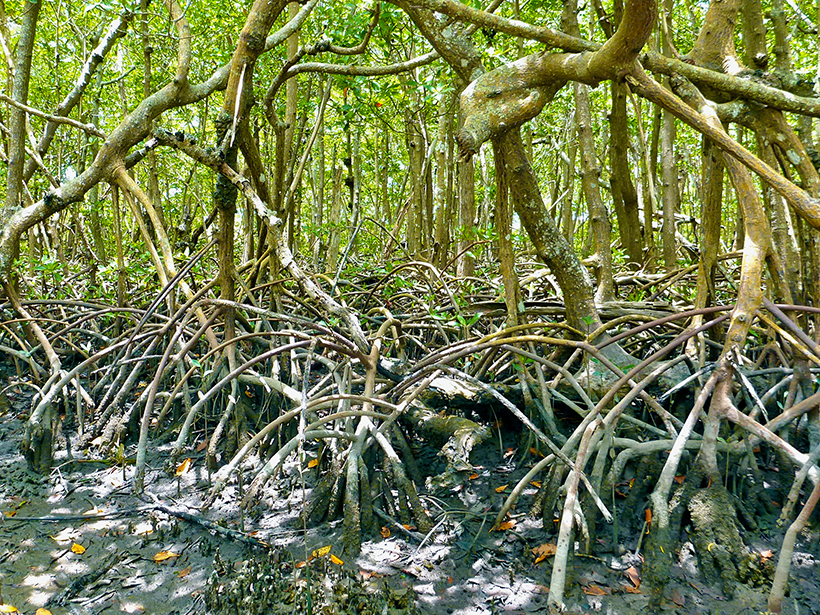Source: Journal of Geophysical Research: Biogeosciences
Sea level rise is one of climate change’s hallmarks. Rising seas threaten coastal populations and can damage coastal ecosystems. Some ecosystems, though, appear to be building themselves up as the water rolls in.
In coastal mangroves and marshes, dead plant matter like leaves and roots does not decompose as it does in drier environments. Instead, it is “buried” in the wet ground. For some of these coastal wetlands, the burial rates seem to be increasing.
Breithaupt et al. noticed this pattern. They took soil core samples from different coastal systems in southwestern Florida to determine whether this trend was genuine or merely an illusion arising from the most common methods used.
The scientists compared several measures, focusing primarily on the degradation of different types of organic carbon and the different tools used to quantify sediment accumulation rates. They determined that the apparent increase was not an artifact of a particular method or an illusion caused by old carbon washing away or degrading over time.
Further examination confirmed that the additional carbon was not merely washed into the study areas from other parts of the coastline or deposited by major storms. Local factors, such as the type of vegetation and the availability of nutrients, played a larger role in the carbon burial increase.
The scientists surmised that sea level rise may drive the increasing accumulation of soil carbon. Longer flood periods encourage mangrove and marsh vegetation to expand their belowground systems, producing and storing more carbon there. Rising sea levels may also allow more space for carbon to be buried and preserved.
This means these coastal areas are both responding well to sea level rise and pulling more carbon from the atmosphere. In the past 120 or so years, organic carbon burial rates have increased by factors of 1.4–6.2 in marshes and mangroves, with mangroves having the greatest gains. As a result, stored carbon stocks have increased by about 4–8 kilograms per square meter in the past century in these study areas.
However, rising sea levels still pose a threat to these systems. Rapid, heavy sediment deposits from hurricanes can smother and kill mangrove trees and other vegetation. Further, the waters are rising faster over time. Though these ecosystems are handling the change now, it remains to be seen how high sea level rise rates can go before adverse effects threaten to drown them.
This dynamic relationship between coastal ecosystems and the sea is an important factor both in carbon estimates and in predicting the effects of sea level rise. As the climate continues to change, more research is needed to estimate how widespread this phenomenon is and to inform coastal decision-making about the best ways to manage ecosystem responses. (Journal of Geophysical Research: Biogeosciences, https://doi.org/10.1029/2019JG005349, 2020)
—Elizabeth Thompson, Science Writer
Citation:
Thompson, E. (2020), Florida coastlines respond to sea level rise, Eos, 101, https://doi.org/10.1029/2020EO142062. Published on 01 April 2020.
Text © 2020. AGU. CC BY-NC-ND 3.0
Except where otherwise noted, images are subject to copyright. Any reuse without express permission from the copyright owner is prohibited.

